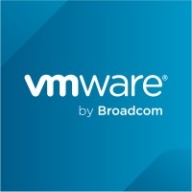

Find out in this report how the two Server Virtualization Software solutions compare in terms of features, pricing, service and support, easy of deployment, and ROI.
With OpenShift combined with IBM Cloud App integration, I can spin an integration server in a second as compared to traditional methods, which could take days or weeks.
Moving to OpenShift resulted in increased system stability and reduced downtime, which contributed to operational efficiency.
It is always advisable to get the bare minimum that you need, and then add more when necessary.
In an environment where the infrastructure has to be up for monitoring and controlling physical infrastructure like water plants, it has absolutely returned on its investment.
There is flexibility and interoperability with multi-mode architectures that accommodate both on-prem and cloud realities.
Server consolidation is one return on investment where we can use one server for multiple workloads.
Red Hat's technical support is responsive and effective.
I have been pretty happy in the past with getting support from Red Hat.
Red Hat's technical support is good, and I would rate it a nine out of ten.
There is nonstop support available around the world, which allows issues to be resolved continuously without interruption, regardless of whether the problem occurs in the USA, India, or another location.
Now, with Broadcom's management, I would rate it a three out of ten.
Most of the time, VMware operates smoothly without requiring support.
The on-demand provisioning of pods and auto-scaling, whether horizontal or vertical, is the best part.
OpenShift's horizontal pod scaling is more effective and efficient than that used in Kubernetes, making it a superior choice for scalability.
Red Hat OpenShift scales excellently, with a rating of ten out of ten.
The return on investment is high because we can maximize the use of one server for multiple workloads.
It's straightforward to procure additional licenses, install them on the host and add them to the same cluster.
You can simply add more hosts to your VMware stack seamlessly, scaling up vertically or horizontally.
It provides better performance yet requires more resources compared to vanilla Kubernetes.
I've had my cluster running for over four years.
It performs well under load, providing the desired output.
Stability is optimal.
Frequent updates are required due to constant security challenges and attacks.
It is a standard tool and is considered very stable.
Learning OpenShift requires complex infrastructure, needing vCenter integration, more advanced answers, active directory, and more expensive hardware.
Red Hat OpenShift's biggest disadvantage is they do not provide any private cloud setup where we can host on our site using their services.
We should aim to include VMware-like capabilities to be competitive, especially considering cost factors.
I highly recommend that continuous support for perpetual licenses be provided.
VMware needs to improve cost efficiency, especially in Pakistan, as customers often seek more affordable solutions.
Recently, VMware shifted its licensing models, and they should streamline it.
Initially, licensing was per CPU, with a memory cap, but the price has doubled, making it difficult to justify for clients with smaller compute needs.
Red Hat can improve on the pricing part by making it more flexible and possibly on the lower side.
The cost of OpenShift is very high, particularly with the OpenShift Plus package, which includes many products and services.
It's expensive, however, the stability it offers is optimal.
In Brazil, we are increasingly using open-source alternatives like Proxmox due to their lower prices in comparison.
During one project, the price doubled or even tripled before implementation, causing issues with clients.
Because it was centrally managed in our company, many metrics that we had to write code for were available out of the box, including utilization, CPU utilization, memory, and similar metrics.
The concept of containers and scaling on demand is a feature I appreciate the most about Red Hat OpenShift.
A valuable feature of Red Hat OpenShift is its ability to handle increased loads by automatically adding nodes.
vSphere Foundation is valuable due to its scalability, reliability, and ease of management.
VMware provides the tools needed to move environments between private and public clouds seamlessly.
The virtual stack of vCenter, its distributed resources system, high availability engines, and the ability to move VM workloads from one host to another are outstanding.
| Product | Market Share (%) |
|---|---|
| Red Hat OpenShift | 2.9% |
| VMware vSphere Foundation | 0.3% |
| Other | 96.8% |


| Company Size | Count |
|---|---|
| Small Business | 17 |
| Midsize Enterprise | 4 |
| Large Enterprise | 40 |
| Company Size | Count |
|---|---|
| Small Business | 3 |
| Midsize Enterprise | 3 |
| Large Enterprise | 9 |
Red Hat OpenShift offers a robust, scalable platform with strong security and automation, suitable for container orchestration, application deployment, and microservices architecture.
Designed to modernize applications by transitioning from legacy systems to cloud-native environments, Red Hat OpenShift provides powerful CI/CD integration and Kubernetes compatibility. Its security features, multi-cloud support, and source-to-image functionality enhance deployment flexibility. While the GUI offers user-friendly navigation, users benefit from its cloud-agnostic nature and efficient lifecycle management. However, improvements are needed in documentation, configuration complexity, and integration with third-party platforms. Pricing and high resource demands can also be challenging for wider adoption.
What are the key features of Red Hat OpenShift?Red Hat OpenShift is strategically implemented for diverse industries focusing on container orchestration and application modernization. Organizations leverage it for migrating applications to cloud-native environments and managing CI/CD pipelines. Its functionality facilitates efficient resource management and microservices architecture adoption, supporting enterprise-level DevOps practices. Users employ it across cloud and on-premises platforms to drive performance improvements.
VMware vSphere Foundation is designed for businesses seeking virtualization management capabilities. It offers essential features to optimize IT operations and improve server utilization, providing a solid infrastructure for managing virtual environments.
VMware vSphere Foundation supports efficient resource management in virtual environments, delivering a robust platform for businesses to streamline their IT processes. It enhances system reliability and offers scalable options for growing business needs. By leveraging virtualization, it reduces hardware dependency while ensuring consistent system performance.
What are the key features of VMware vSphere Foundation?
What benefits or ROI should users consider?
VMware vSphere Foundation is implemented effectively across industries like healthcare, finance, and retail. It supports crucial workloads, allowing these sectors to maintain operational efficiency while handling sensitive data. Its flexibility and robust capabilities make it suitable for diverse operational demands.
We monitor all Server Virtualization Software reviews to prevent fraudulent reviews and keep review quality high. We do not post reviews by company employees or direct competitors. We validate each review for authenticity via cross-reference with LinkedIn, and personal follow-up with the reviewer when necessary.